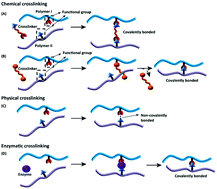当前位置:
X-MOL 学术
›
Biomater. Sci.
›
论文详情
Our official English website, www.x-mol.net, welcomes your
feedback! (Note: you will need to create a separate account there.)
Overcoming T. gondii infection and intracellular protein nanocapsules as biomaterials for ultrasonically controlled drug release
Biomaterials Science ( IF 5.8 ) Pub Date : 2017-07-20 00:00:00 , DOI: 10.1039/c7bm00425g M. S. Aw 1, 2, 3, 4, 5 , L. Paniwnyk 1, 2, 3, 4, 5
Biomaterials Science ( IF 5.8 ) Pub Date : 2017-07-20 00:00:00 , DOI: 10.1039/c7bm00425g M. S. Aw 1, 2, 3, 4, 5 , L. Paniwnyk 1, 2, 3, 4, 5
Affiliation

|
One of the pivotal matters of concern in intracellular drug delivery is the preparation of biomaterials containing drugs that are compatible with the host target. Nanocapsules for oral delivery are found to be suitable candidates for targeting Toxoplasma gondii (T. gondii), a maneuvering and smart protozoic parasite found across Europe and America that causes a subtle but deadly infection. To overcome this disease, there is much potential of integrating protein-based cells into bioinspired nanocompartments such as via biodegradable cross-linked disulfide polyelectrolyte nanoparticles. The inner membrane vesicle system of these protein-drugs is not as simple as one might think. It is a complex transport network that includes sequential pathways, namely, endocytosis, exocytosis and autophagy. Unfortunately, the intracellular trafficking routes for nanoparticles in cells have not been extensively and intensively investigated. Hence, there lies the need to create robust protein nanocapsules for precise tracing and triggering of drug release to combat this protozoic disease. Protein nanocapsules have the advantage over other biomaterials due to their biocompatibility, use of natural ingredients, non-invasiveness, patient compliance, cost and time effectiveness. They also offer low maintenance, non-toxicity to healthy cells and a strictly defined route toward intracellular elimination through controlled drug delivery within the therapeutic window. This review covers the unprecedented opportunities that exist for constructing advanced nanocapsules to meet the growing needs arising from many therapeutic fields. Their versatile use includes therapeutic ultrasound for tumor imaging, recombinant DNA, ligand and functional group binding, the delivery of drugs and peptides via protein nanocapsules and polyelectrolytes, ultrasound-(US)-aided drug release through the gastrointestinal (GI) tract, and the recent progress in targeting tumor cells and a vast range of cancer therapies. This review also outlines the limitations of current technologies and the directions of future outlook.
中文翻译:

克服弓形虫感染和细胞内蛋白纳米胶囊作为超声控制药物释放的生物材料
细胞内药物递送中关注的关键问题之一是包含与宿主靶标相容的药物的生物材料的制备。已发现用于口服递送的纳米胶囊是靶向弓形虫(T. gondii)的合适候选者,弓形虫是一种在欧洲和美国发现的可引起细微但致命的感染的机动且灵巧的原生动物寄生虫。为了克服这种疾病,将基于蛋白质的细胞整合到受生物启发的纳米隔室中的潜力很大,例如通过可生物降解的交联二硫化物聚电解质纳米粒子。这些蛋白质药物的内膜囊泡系统并不像人们想象的那么简单。它是一个复杂的运输网络,包括顺序途径,即胞吞作用,胞吐作用和自噬。不幸的是,细胞中纳米颗粒的细胞内运输途径尚未得到广泛和深入的研究。因此,需要创建坚固的蛋白质纳米胶囊以精确追踪和触发药物释放以对抗这种原生动物疾病。蛋白质纳米胶囊由于其生物相容性,天然成分的使用,无创性,患者依从性,成本和时间有效性而具有优于其他生物材料的优势。他们还提供低维护成本,对健康细胞无毒,并通过在治疗窗口内控制药物传递来实现严格的清除细胞内途径的途径。这篇综述涵盖了构建先进的纳米胶囊以满足众多治疗领域不断增长的需求所面临的前所未有的机会。它们的广泛用途包括用于肿瘤成像的治疗超声,重组DNA,配体和官能团结合,药物和肽的递送通过蛋白质纳米胶囊和聚电解质,超声(US)辅助药物通过胃肠道(GI)释放,以及靶向肿瘤细胞和广泛癌症疗法的最新进展。这篇综述还概述了当前技术的局限性以及未来的发展方向。
更新日期:2017-08-04
中文翻译:

克服弓形虫感染和细胞内蛋白纳米胶囊作为超声控制药物释放的生物材料
细胞内药物递送中关注的关键问题之一是包含与宿主靶标相容的药物的生物材料的制备。已发现用于口服递送的纳米胶囊是靶向弓形虫(T. gondii)的合适候选者,弓形虫是一种在欧洲和美国发现的可引起细微但致命的感染的机动且灵巧的原生动物寄生虫。为了克服这种疾病,将基于蛋白质的细胞整合到受生物启发的纳米隔室中的潜力很大,例如通过可生物降解的交联二硫化物聚电解质纳米粒子。这些蛋白质药物的内膜囊泡系统并不像人们想象的那么简单。它是一个复杂的运输网络,包括顺序途径,即胞吞作用,胞吐作用和自噬。不幸的是,细胞中纳米颗粒的细胞内运输途径尚未得到广泛和深入的研究。因此,需要创建坚固的蛋白质纳米胶囊以精确追踪和触发药物释放以对抗这种原生动物疾病。蛋白质纳米胶囊由于其生物相容性,天然成分的使用,无创性,患者依从性,成本和时间有效性而具有优于其他生物材料的优势。他们还提供低维护成本,对健康细胞无毒,并通过在治疗窗口内控制药物传递来实现严格的清除细胞内途径的途径。这篇综述涵盖了构建先进的纳米胶囊以满足众多治疗领域不断增长的需求所面临的前所未有的机会。它们的广泛用途包括用于肿瘤成像的治疗超声,重组DNA,配体和官能团结合,药物和肽的递送通过蛋白质纳米胶囊和聚电解质,超声(US)辅助药物通过胃肠道(GI)释放,以及靶向肿瘤细胞和广泛癌症疗法的最新进展。这篇综述还概述了当前技术的局限性以及未来的发展方向。











































 京公网安备 11010802027423号
京公网安备 11010802027423号